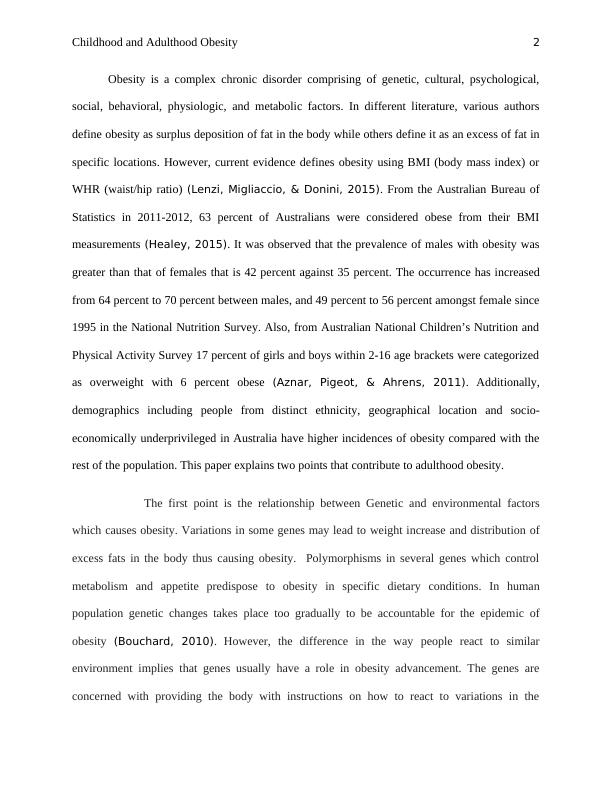Childhood and Adulthood Obesity
Write and explain 2 points against the topic of managing childhood obesity in 400 words, using evidence-based research from a nursing/healthcare professional's perspective.
4 Pages835 Words497 Views
Added on 2022-11-13
About This Document
This paper explains two points that contribute to adulthood obesity. The first point is the relationship between Genetic and environmental factors which causes obesity. The other point is behavioral factors can lead to adulthood obesity.
Childhood and Adulthood Obesity
Write and explain 2 points against the topic of managing childhood obesity in 400 words, using evidence-based research from a nursing/healthcare professional's perspective.
Added on 2022-11-13
ShareRelated Documents
End of preview
Want to access all the pages? Upload your documents or become a member.
Health System and Economics
|9
|1951
|9
Public Health - Obesity | Assignment
|13
|4052
|49
Childhood Obesity in Australia
|13
|3262
|28
Childhood Obesity in UK: Causes, Consequences, Prevention, and Health Promotion
|11
|782
|79
Ethics and Research in Professional Context Assignment
|13
|3320
|215
Obesity and Overweight Pandemic in Australia
|6
|1587
|456


